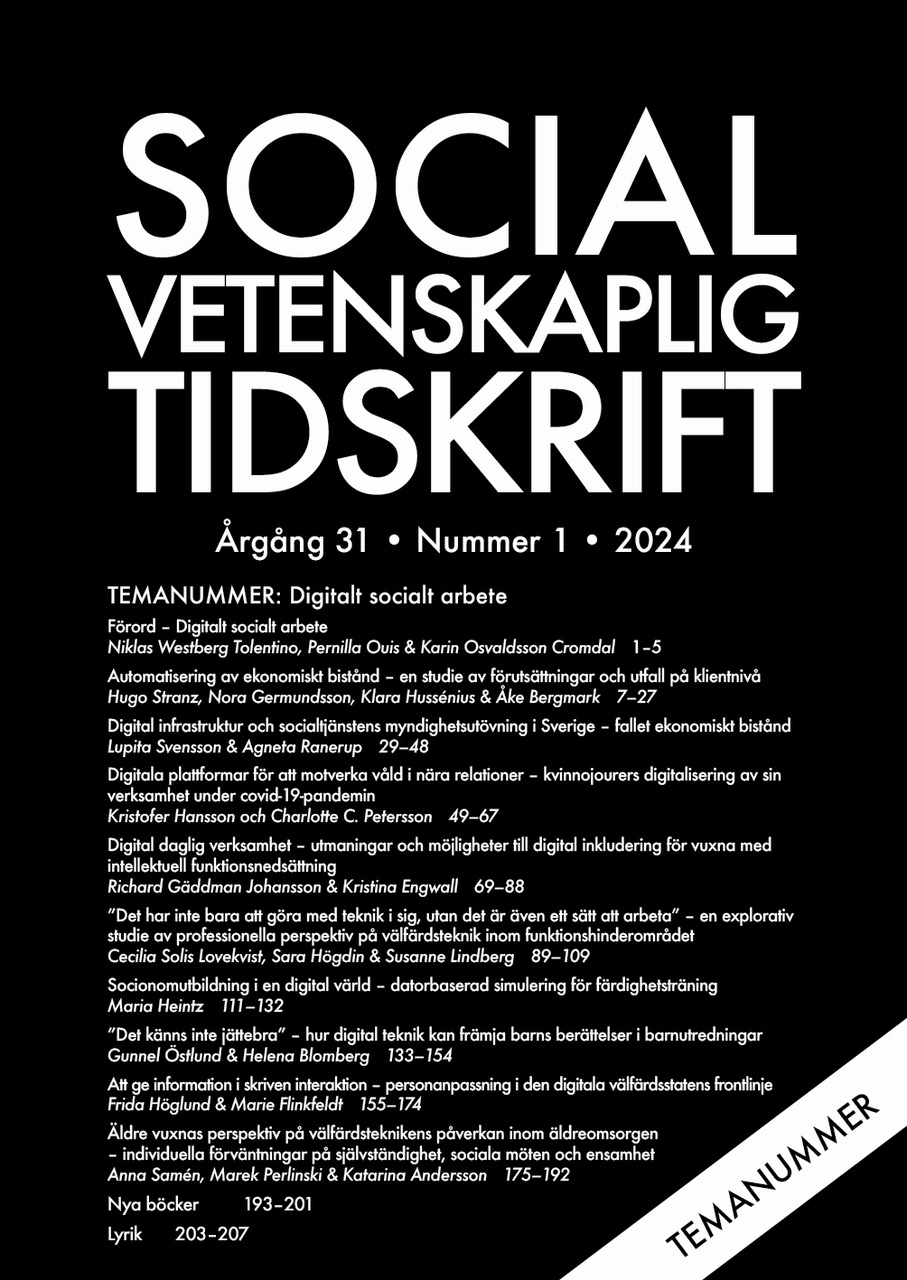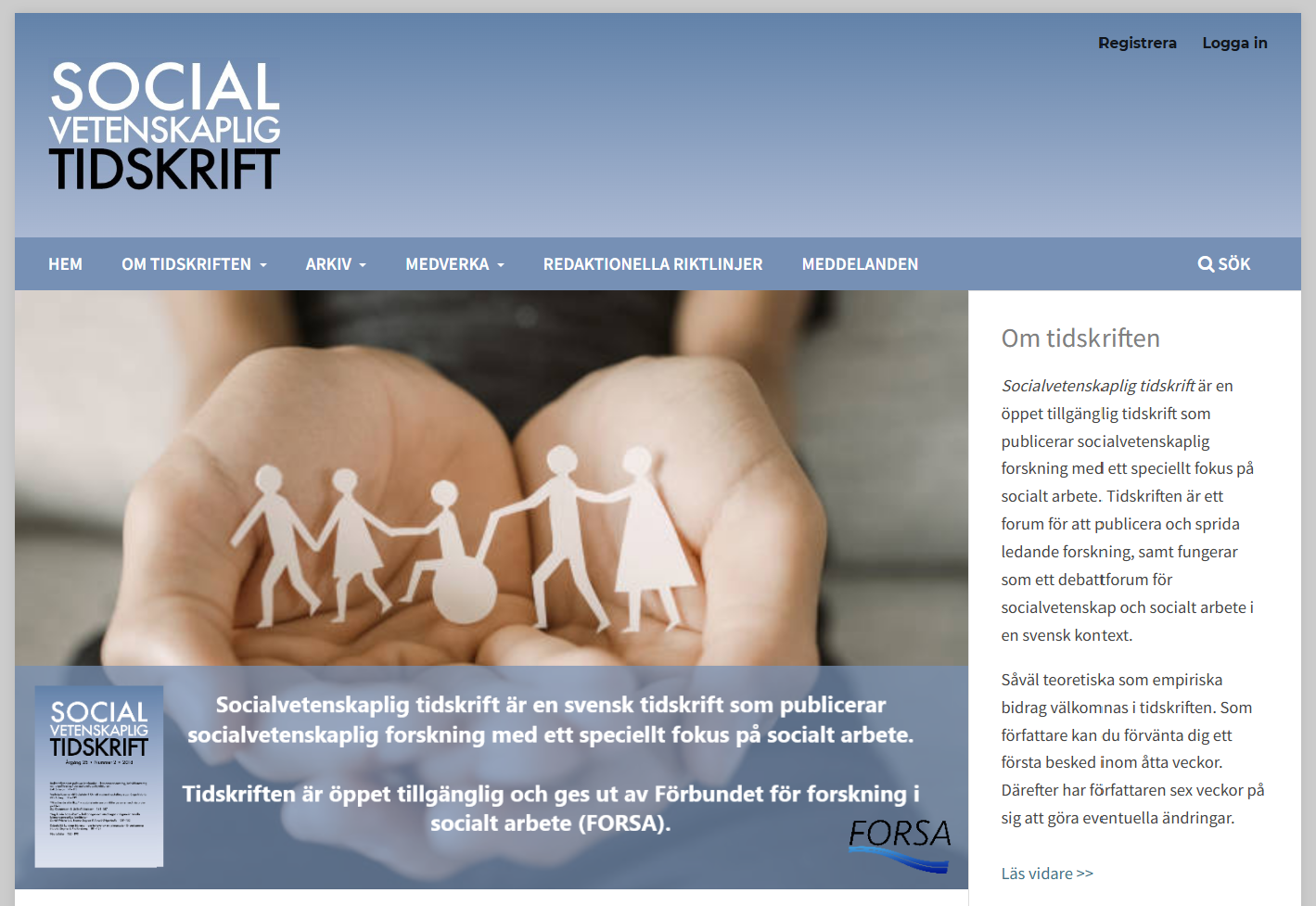Att ge information i skriven interaktion
– personanpassning i den digitala välfärdsstatens frontlinje
DOI:
https://doi.org/10.3384/SVT.2024.31.1.4877Nyckelord:
digital interaction, conversation analysis, street-level bureaucracy, responsivenessAbstract
To provide information in written interaction – responsiveness at the digital welfare state’s frontline
Digitalisation has created opportunities for people to have contact with representatives of human service organisations through various text-based channels (e.g., online chat, social media, email). Despite the fact that such text-based interaction is common in social work practice today, there is remarkably little knowledge about how the interaction is structured in practice and what characteristics the different forms have. Such knowledge is central to designing appropriate contacts that respond to clients’ needs. This study uses conversation analysis to study two forms of digital text-based interaction between clients and representatives of the Swedish Social Insurance Agency (SSIA). The data consist of circa 900 exchanges via email and the SSIA’s official Facebook page for parents. Identified patterns are also compared with 300 recorded phone calls to the SSIA, to make visible how participants orient to the limitations and affordances that the textual arenas provide in practice and which functions they thereby fulfill with regard to client relations. The analysis focuses on how practitioners manage responsiveness in replies to client questions. We show how practitioners’ replies tend to deviate from conversational norms by not being designed in line with the design or content of the questions. For example, practitioners often provide information that is conditioned (e.g., “if …then …”) rather than yes/no answers (even when replying to yes/no questions). Through this, the analysis also demonstrates how practitioners realise policy and organisational goals in digital text-based interaction. The study contributes knowledge about how help and service is provided in digital text-based interaction and highlights the problem of generally held replies that are not adapted to the recipient, as the interaction risks not fulfilling the expected function for the clients. We also problematise how textual interaction on social media platforms poses risks for clients’ privacy from an ethical perspective.
Downloads
Publicerad
Referera så här
Nummer
Sektion
Licens
Copyright (c) 2024 Frida Höglund, Marie Flinkfeldt

Det här verket är licensierat under en Creative Commons Erkännande 4.0 Internationell-licens.
Allt material i Socialvetenskaplig tidskrift publiceras sedan 2022 (Vol 28 Nr 2) med omedelbar öppen tillgång (open access), under Creative Commons-licensen CC BY 4.0. Upphovsrätten till innehållet tillhör respektive författare.
Allt innehåll i tidskriften är fritt tillgängligt utan kostnad och får fritt läsas, laddas ned, kopieras, delas, skrivas ut och länkas. När innehållet används måste författare, källa och licens anges. Författaren kan fritt göra sin publicerade text tillgänglig på institutionella och internetbaserade arkiv, exempelvis sitt lärosätes digitala arkiv eller andra tjänster för detta.
Inga publiceringsavgifter tas ut vid publicering i Socialvetenskaplig tidskrift.


